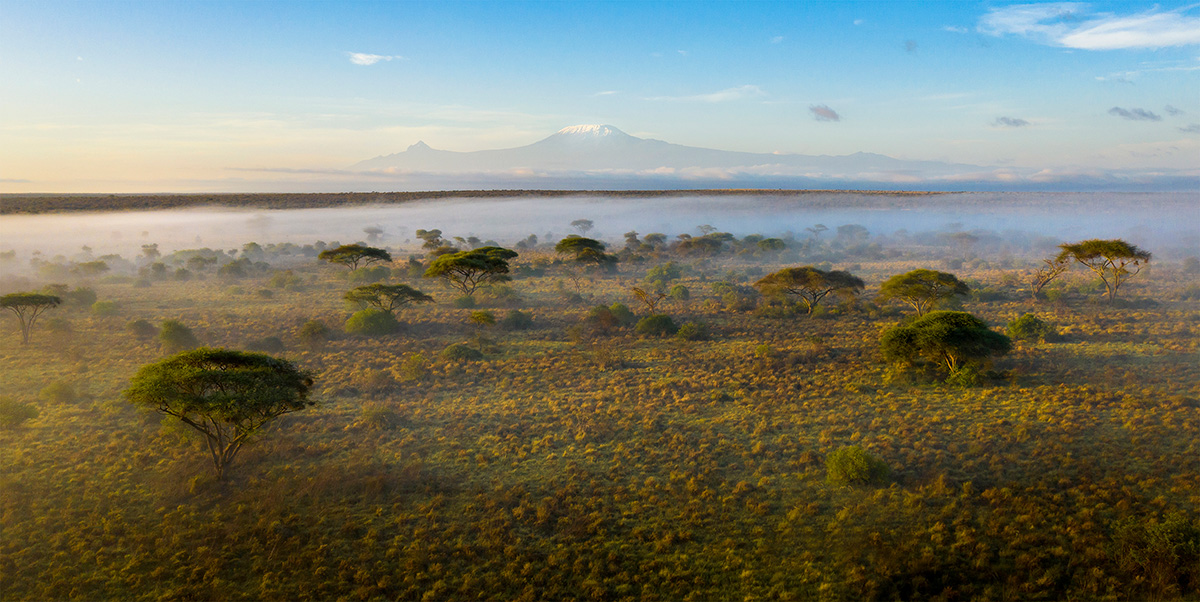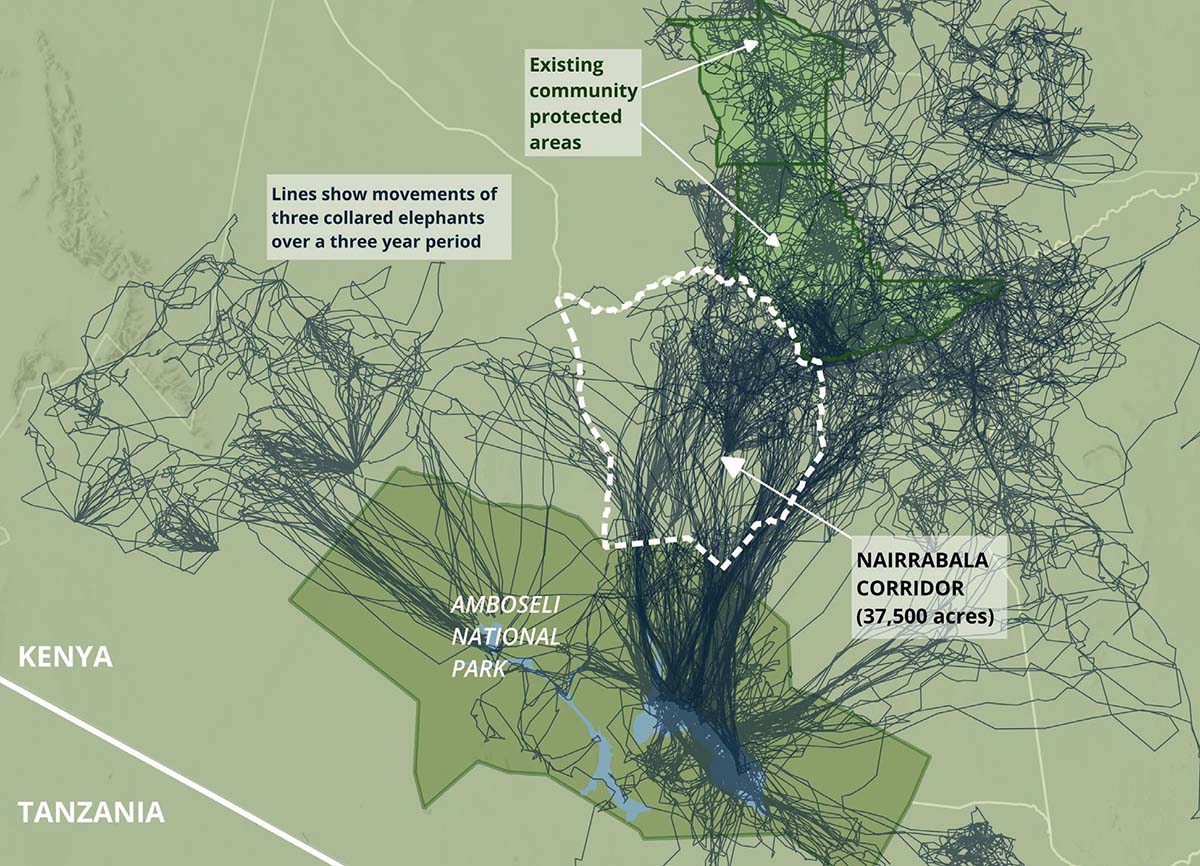
Amboseli National Park (NP) is an oasis. It protects life-giving springs and swamps that keep animals – both wild and domestic – alive through the dry season, but it is too small to support all these animals on a permanent basis. Animals range far beyond its boundaries and if they cannot move freely, they will eventually die.
When animals leave the park, including elephants like Paolo, they move along favored routes known as migration corridors, some of which connect to neighboring ecosystems in Tanzania, the Rift Valley, and Tsavo.
The Kimana corridor, where Big Life has worked with landowners for the last decade, allows animals to move in and out of Amboseli NP to the east. But for animals moving north, the Nairrabala corridor is the key.
Nairrabala was communally-owned by the Maasai community of Olgulului Group Ranch. The area is going through a process called land subdivision, which will split it up into thousands of small parcels that can be bought and sold, and potentially fenced and converted to other land-uses.
Nairrabala is the most important route used by elephants and other animals to reach important natural resources in the north. The lines on the map shown here represent the movements of just 3 collared elephants over a 3-year period.

As you can see, Nairrabala is an elephant highway. This corridor is natural and currently clear of obstructions like fences and other development, but we need your help to keep it that way.
The corridor itself is 37,500 acres and each acre costs just under $10 a year to lease; this is money that goes directly to Maasai landowners in return for keeping their land open and available for wildlife use. By protecting wild habitats like Nairrabala, we can keep this ecosystem alive, and home to giants like Paolo.
Thanks to our partners at Amboseli Trust for Elephants for the elephant collar data.
Photo: Philip J. Briggs
